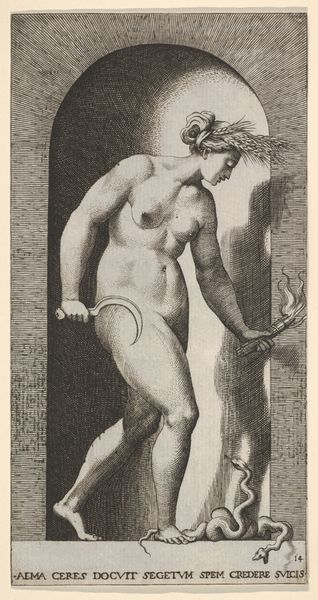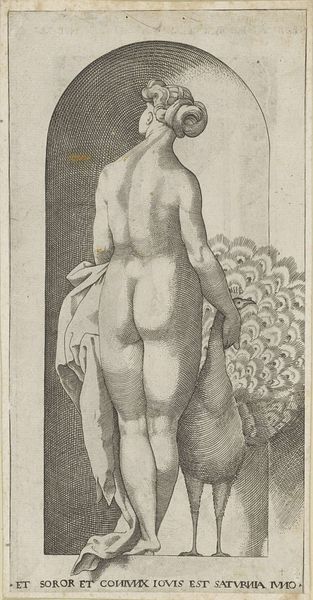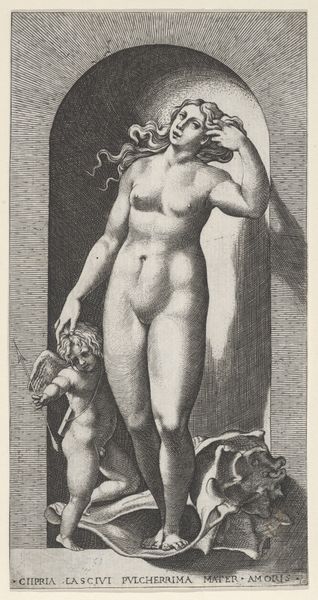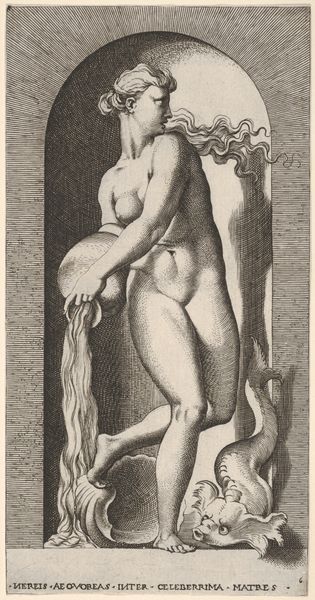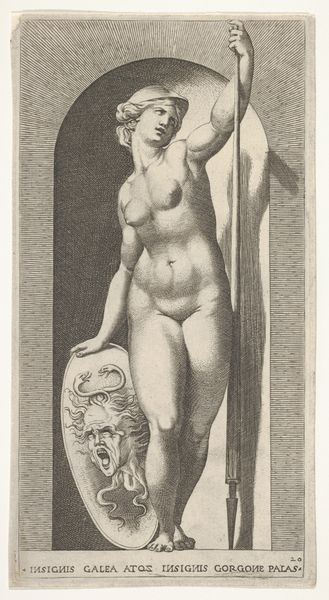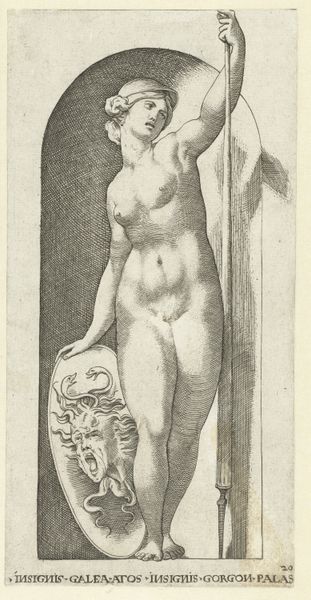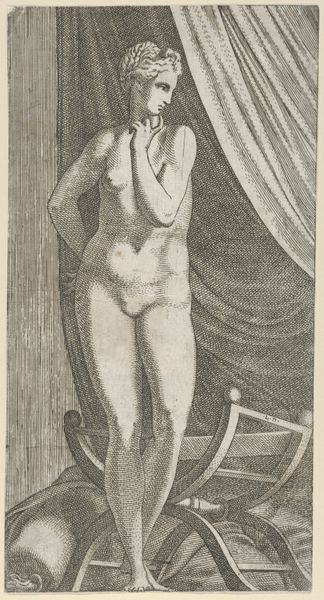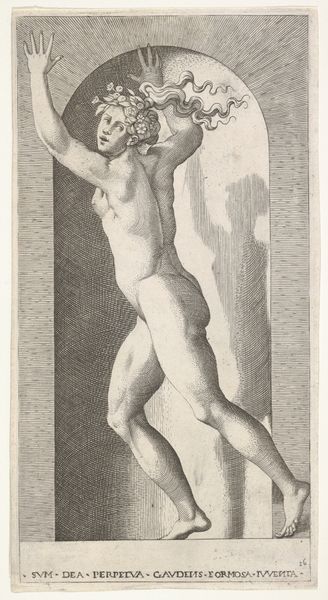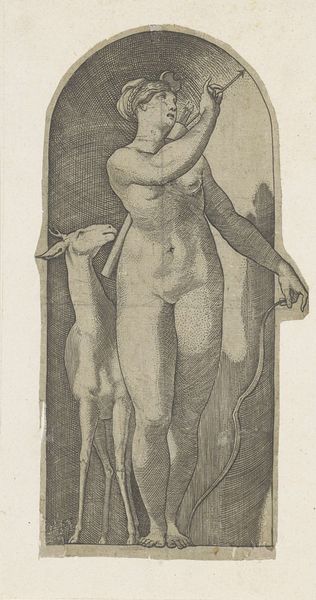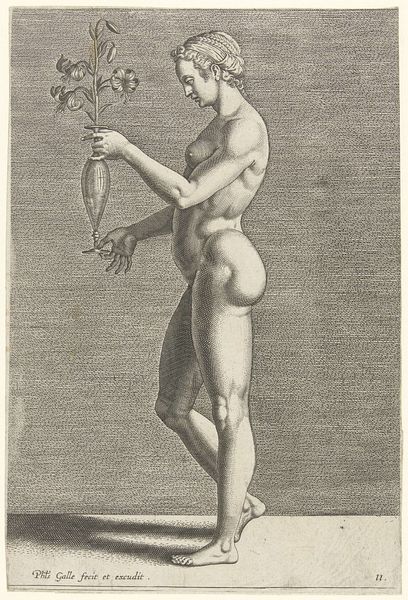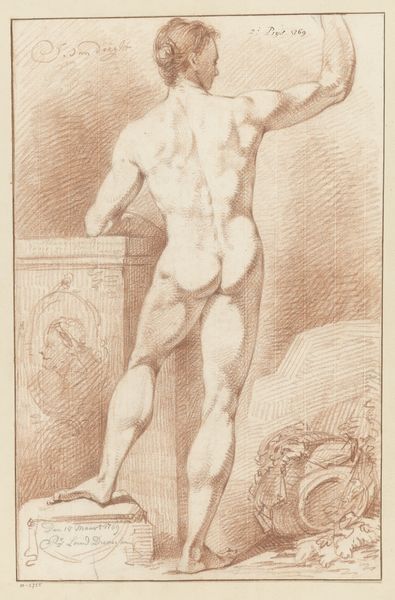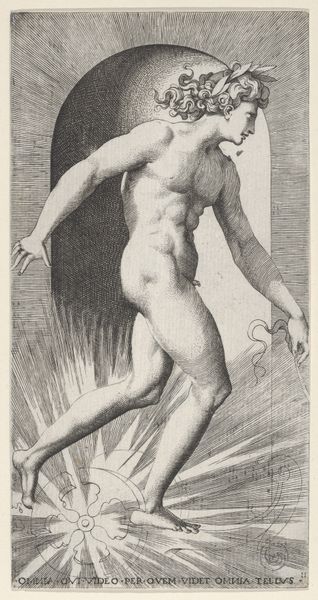
Plate 4: Juno standing in a niche, viewed from behind, stroking a peacock to her right, from "Mythological Gods and Goddesses" 1526
0:00
0:00
drawing, print, engraving
#
drawing
#
allegory
# print
#
figuration
#
11_renaissance
#
history-painting
#
italian-renaissance
#
nude
#
engraving
Dimensions: sheet: 8 3/16 x 4 1/4 in. (20.8 x 10.8 cm)
Copyright: Public Domain
Giovanni Jacopo Caraglio made this print of Juno sometime in the 16th century. It's an engraving, meaning the artist used a tool called a burin to cut lines into a metal plate, which was then inked and printed onto paper. Look closely, and you can see how the varying depths and densities of lines create shading and volume, giving Juno's form its weight. This was no quick process. Each line had to be carefully considered and executed, a testament to Caraglio's skill and patience. Engraving was a reproductive medium, and there was something of an industrial process to it. Though this print presents a classical, sensuous image, the way it was made also speaks to the rise of mechanical reproduction, and a new culture of dissemination that was developing at this time. Thinking about this process helps us understand the image not just as a depiction of a mythological scene, but as a product of its time, embedded in the changing landscape of labor, technology, and artistic production.
Comments
No comments
Be the first to comment and join the conversation on the ultimate creative platform.
